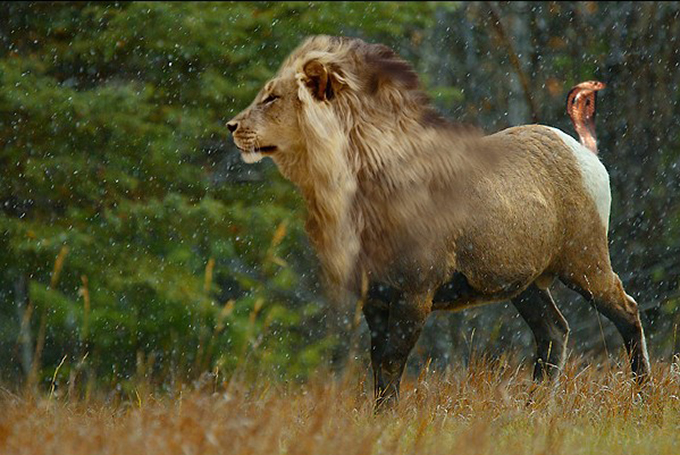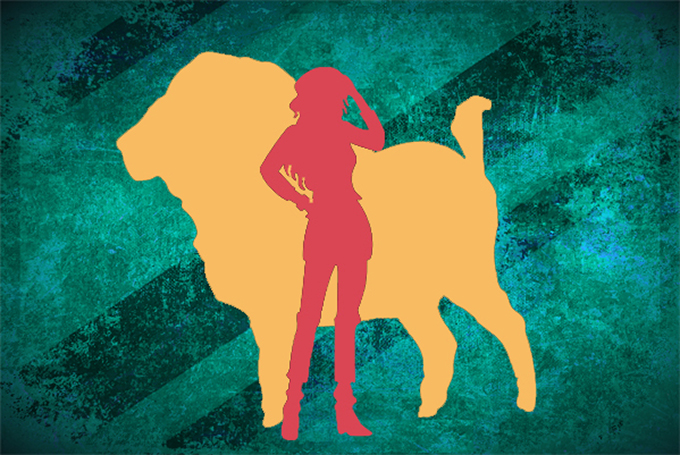Capranthera Najera : Chimera
| Kingdom: | Animalia |
| Phylum: | Chordata |
| Class: | Mammalia |
| Family: | Bovidae |
| Genera: | Capranthera |
| Species: | Najera |
A fire-breathing monster, which, according to the Homeric poems, was of divine origin. [B]rought up by Amisodarus, king of Caria, and afterwards made great havoc in all the country around and among men. Dictionary of Greek and Roman Biography and Mythology, on the Theoi Project website
The Chimera
Instead of forming packs, chimeras roam almost entirely alone. Roughly every 2 years, females will locate any nearby males and mate with them. Perhaps due to the females' tendency to use their venemous snake-bites to slow a male and dominate him, males often escape matings as quickly as possible. By seeking out and mating with several males, the female ensures she is impregnated; gestation lasts 7-10 months, depending on the age of the female. Younger females generally take longer to bear offspring, possibly because they're smaller and can't eat as heavily for each meal as an older, more experienced female.
There may be as many as 5 cubs in a litter, although 2-3 is the average. When more than 3 cubs are born, especially to a younger female, the weakest cubs tend to be killed and eaten by their own siblings. Particularly young mothers have even been known to kill and eat all but one of their cubs if hunting has been lean for the 2-3 months leading up to the birth. Males range further afield around the birthing time, almost as if avoiding the savage mothers and their almost equally savage young. While a female will generally mate every 2 years, offspring range well within the mother's territory for up to 4 years. Both genders become sexually active around 3 years.
Territory & Feeding
A wide-ranging creature and generally solitary, the chimera best known for its fierce temperment and voracious appetite. They are generally cited as nearly twice the size of a large work-horse, but on average they're actually not much bigger than a full-grown male mountain goat. Chimeras usually inhabit more remote regions, ranging up and down mountain ranges or across largely uninhabited steppes. They prefer more temperate climates, but can be found in hotter, more arid regions as well. Although there is some evidence they can, in fact, breathe fire it is highly unlikely they do so regularly.
As largely carnivorous beasts, chimeras make use of their goat-like bodies to hunt mountain goats and other animals that often rely on climbing steep cliffs as an escape. The snake that serves as a tail also allows the chimera to perch on a ledge and attack prey from above with a swift, venomous bite. The snake is generally not considered strong enough to lift anothing larger than a hare or perhaps even a fox; this forces the chimera to choose a perch that overlooks a wider area so the prey isn't lost in a fall. Once incapacitated, either by snake-bite or other means, the prey is usually consumed at or near the place of attack.
Prey & Predator
While a fierce predator, the chimera is limited primarily to bite attacks. Its hooves can be deadly, but without claws the chimera can't rend its prey. Adapting to this, however, the chimera has developed excellent climbing, leaping, and crushing attacks. While it can't rip open prey and then follow the blood-trail until the animal collapses, it can and will use powerful leaps or deadly drops, its strong hooves breaking bones and doing significant internal damage.
A chimera of average size is, despite its venomous snake of a tail, often prey to wolf packs and sometimes even large bears. A lone wolf has been known to pull down a fully grown chimera, although generally the chimera is either quite young, quite old, or somehow disabled. Hunters have found chimeras to be rather a challenge as they learn fairly quickly when hunted, but unless of unusual size (or unless the chimera resorts to breathing fire) its no more challenging than hunting a lion or hungry bear.

